


Julian Skidmore, Senior Software Engineer at embedded systems consultancy ByteSnap Design
Driven by concerns over global heating and improvements in battery technology, electric vehicles are the most promising solution for emissions-free transit, but one barrier to adoption is the slower-developing EV charging infrastructure which can be inconsistent and difficult to use.
Battery electric vehicle (BEV) sales in the UK are projected to be around 100,000 during 2020 and the government has set a goal for half of all new vehicle sales by 2030 to fall into the “ultra-low” emissions category. Yet, at current growth rates over 2010 to 2019, all registered vehicles will be BEVs by the mid-2020s.
The availability of public charging points is an issue though, and charging availability and technology could potentially hold back EV adoption. While battery capabilities have grown rapidly, from a range of 100 miles to between 200 and 300 miles, EV prices are falling, consumer choice is growing and EV performance is rising, but EV charging infrastructure is not yet keeping up.
Charging
Rapid DC charger rollout is essential for longer journeys, because the charging rate has a much bigger impact on average speeds than battery size. If we want to put EVs on the highway, rapid charging matters more than a large battery, but for local or urban driving there will be a market for smaller battery, slow charging EVs.
AC chargers, like those at home, with slower charging and lighter loading are best for grid management with local or urban driving. That's because most journeys are short, so their energy requirements won't change over time. Home chargers obviously keep up with EVs sold, but public ones aren't so they should be targeted, because they're cheap and cover most cases. Some of the new cars in 2020 will have modest batteries, short ranges and 7KW charging as standard.
User experience
EV chargers are less user-friendly than we'd expect from something that is powering our driving future. Billing mechanisms can be “nasty” and payment methods inconsistent; connections can be faulty or intermittent; systems can crash and user interfaces that are on the opposite side of the charger from the plug cause inconvenience.
We wouldn't accept this lack of service at a petrol station and EV journeys shouldn't have to be that stressful.
Revolution
While we are at the beginning of the EV revolution, which presents an opportunity without the constraints of fossil fuel powered cars which need piping, tankers, stations and Just In Time logistics, better government support and initiatives are needed to support charging locations and a good geographical distribution of chargers. Subsidies for charging network providers may also be needed, along with consideration of load balancing, as distributed energy could cause intermittent supply.
Usage restrictions and non-standardised interfaces represent wasted engineering effort that actually slows down adoption and finally charging points are unmanned, resulting in maintenance issues. However, that could actually present an opportunity for a new service industry.
Although charger manufacturers would like a comprehensive networking protocol between the charger and the car, the IEC 61851 and 62196 specifications have led to a plethora of CAN bus, IP over Power and crude PWM communications along with incompatible plugs. Combined with that, manufacturers' reluctance to provide useful EV battery charging status (to protect their patents) will also continue to inhibit the potential for Smart EV charging.
Vehicle to Grid (V2G)
Because batteries also represent a source of base-load microgeneration, EVs can be part of the energy solution. ByteSnap, in collaboration with a consortium of partners, is working on a two year project called VIGIL (Vehicle-to-Grid Intelligent Control), which will see the development of a new communication and control platform for vehicle-to-grid (V2G) and vehicle-to-building (V2B) systems.
V2G technology could mean that EVs can return energy to the power grid when stationary and plugged in, increasing energy grid resilience and providing payback for EV drivers. V2G connectivity could also take advantage of the new phenomenon of renewable energy surplus. Germany is one country where consumers can experience negative energy prices, thanks to renewable and green energy initiatives.
VIGIL would promote comprehensive charging communications, in turn aiding EV adoption, with ByteSnap's smart communications controller (called RAY) managing the charge going back into the smart building, or substation. In turn, substation energy can flow into the smart building; charge EVs or return power to the grid.
Future
Appless charging, where EV owners can tap a credit or debit card on a charging post to start and stop charging is something every EV driver would like. Some Polar Ultrachargers already have a contactless payment method and Ecotricity Electric Highway plans a similar upgrade, despite the plan bringing with it higher charging costs.
Combining substations with urban car parks could help solve issues of kerb-based charging sockets which can be inaccessible or easily damaged. Secure multi-storey car parks with built-in charging facilities where the infrastructure is in one place and therefore cheaper to implement, upgrade and maintain, would clear streets of EVs and provide security.
Alongside V2G facilities, fully automated charging is the dream of every EV driver. Intuitively, robots would plug in charging cables, but this over-engineering of a human oriented interface might better be met by inductive charging, though since that requires charging mechanisms to change yet again it's more likely in the long term.
EVs are the most likely technology to replace fossil fueled vehicles and the nascent world of EVs is a rapidly accelerating, disruptive market, which charging technology and infrastructure is as critical to as the vehicles themselves. Driving the deployment of EVs will come from making EV driving as effortless and attractive as petrol and diesel vehicles.
Alphabet’s autonomous vehicle company, Waymo has introduced the fifth-generation of the Waymo Driver.
The company claims that it is informed by experience, designed for scale, engineered to tackle more environments.
Waymo's combination of hardware, software, and computer powers its vehicles to safely get people and things where they're going. In order to navigate the complexities of driving - from the biker weaving and speeding through traffic on a foggy San Francisco morning, to the family pet rushing into the street to greet at night - the Waymo Driver uses a comprehensive view of its surroundings and a detailed understanding of its environment to accurately reason about its next move.
No one type of sensor on its own can provide that level of detail in all operating conditions; therefore, the company has spent over a decade developing a single integrated system comprised of complementary sensors to give our Driver this comprehensive view of the world so that it can safely navigate complex environments.
Backed by 20 million self-driven miles on public roads and over 10 billion miles of simulation, engineered to tackle an even more diverse range of complex driving environments with unparalleled capabilities, the completely redesigned fifth-generation hardware sensor suite will enable the scaled deployment of the Waymo Driver.
As one of the Waymo Driver's most powerful sensors, LiDAR paints a 3D picture of its surroundings, allowing the vehicle to measure the size and distance of objects around itself, whether they're up close or over 300 metres away. LiDAR data can be used to identify objects driving into the sun on the brightest days as well as on moonless nights.
The next-generation family of LiDARs is designed to work together. The new 360 LiDAR system provides a bird's-eye view of the cars, cyclists, and pedestrians surrounding the vehicle. It not only helps the Waymo Driver navigate the complexities of city driving by distinguishing the opening of a car door a city block away, it also gives Waymo's trucks the ability to spot road debris hundreds of meters ahead on the highway, so there's enough time for a Waymo driven truck to stop or make a lane change.
Simultaneously, the new perimeter LiDARs, placed at four points around the sides of the vehicle, offer unparalleled coverage with a wide field of view to detect objects close-by. These short-range LiDARs provide enhanced spatial resolution and accuracy to navigate tight gaps in city traffic and cover potential blind spots on hilly terrain. As a system, this new family of LiDARs is a significant upgrade, enhancing the Waymo Driver's capabilities in a way that will help us as we scale our fleet to more challenging places.
With high-dynamic range and thermal stability over automotive temperature ranges, our vision system cameras are designed to capture more detail and provide sharper images in the toughest driving environments.
Waymo's latest long range cameras and 360 vision system now see much farther than before, allowing the vehicle to identify important details like pedestrians and stop signs greater than 500 metres away. Through advanced design innovations, including custom lenses and precise optomechanical engineering, the vision systems enable much higher performance levels than cameras on cars today.
In addition, the new perimeter vision system works in conjunction with our perimeter LiDARs to give the Waymo Driver another perspective of objects close to the vehicle. For example, while the perimeter LiDARs detect obstacles directly in front of the vehicle with precision, the perimeter cameras provide our machine learning algorithms additional details to reliably identify objects, providing more context to the traffic scene.
Concurrently, the new peripheral vision system helps reduce blind spots caused by parked cars or large vehicles. These peripheral cameras enable us to peek around a truck driving in front of us, seeing if we can safely overtake it or if we should wait. Together, these various types of cameras allow us to make decisions earlier, faster, and with even more information than we've ever had before.
While LiDAR helps see objects and cameras help understand the surroundings, radar complements both of these with its unique ability to instantaneously see and measure an object's velocity (or lack thereof) even in tough weather conditions such as rain, fog, and snow.
A decade of testing in the real world has taught Waymo that it is beneficial when radar on self-driving vehicles provides the system with a persistent view of their entire surroundings. For its fifth-generation hardware sensor suite, Waymo has redesigned the architecture, outputs, and signal processing capabilities to create one of the world's first imaging radar system for self-driving - providing unparalleled resolution, range, and field of view to see the whole scene at once. Performance is further improved by overlapping the coverage between radars, and with the cameras and lidars as well.
While traditional automotive radars are capable of tracking moving objects, the new imaging radar has higher resolution and enhanced signal processing capabilities that allow it to better detect and track objects that are moving, barely moving, or stopped.The next-generation radar can also see objects at great distances, including detecting a motorcyclist from hundreds of metres away. Like with the other long range sensors, being able to accurately detect objects at greater distances gives a longer reaction time to make a more comfortable experience for the riders.
With each generation of its custom hardware Waymo has been able to bring down the cost of its sensors while delivering even more capabilities and compute power. With the fifth-generation hardware, the company has simplified the design and manufacturing process so it can be production-ready, and latest sensors deliver more performance than ever before, at half the cost of our previous generation.
Waymo has already manufactured and integrated the first of the new generation sensors onto its Jaguar I-PACE platform. With the first of these new vehicles, Waymo completed comprehensive module-level and system-level tests to ensure the next-generation hardware can withstand whatever the roads throw at it—from stormy weather and salted roads, to extreme heat and dirt storms.
SMMT has called on the Chancellor to use next week’s Budget to announce bold new measures to make new-tech zero emission-capable cars, including plug-in hybrids, more affordable for mass market buyers.
In 2020, manufacturers will bring more than 23 new battery electric and 10 plug-in hybrid electric cars to the UK to add to the more than 65 already on sale, but take up of these new models depends on affordability and the provision of adequate charging infrastructure.
SMMT is calling for the removal of VAT from all new battery electric, plug-in hybrid electric and hydrogen fuel cell electric cars - a move which would cut the purchase price of an average family battery electric run-around by some £5,600 ($7,280). Combined with additional measures, including the long term continuation of the critical plug-in car grant at current levels and its reintroduction for plug-in hybrids; and exemption from VED and insurance premium tax, the upfront cost of these vehicles could be cut by as much as £10,000 ($13,000), helping to deliver greater cost parity with conventionally powered vehicles and making them a viable option for many more buyers.
Based on current market forecasts, SMMT calculations show that the removal of VAT could increase sales of battery electric cars alone to just under one million between now and 2024, resulting in an additional CO2 saving of 1.2 million tonnes over this period. However, this must be part of a comprehensive package of incentives implemented alongside substantial investment in charging infrastructure to ensure a sustainable transition for consumers and businesses of all incomes, regions and lifestyles. Only by addressing both these issues can the government's accelerated ambitions for zero emission vehicle sales be met.
Mike Hawes, SMMT Chief Executive, said, “To drive the transition to zero emission motoring, we need carrots, not sticks - as the evidence shows, talk of bans and penalties only means people hang on to their older, more polluting vehicles for longer. It's time for a change of approach, which means encouraging the consumer to invest in the cleanest new car that best suits their needs. If that is to be electric, government must take bold action to make these vehicles more affordable and as convenient to recharge as their petrol and diesel equivalents are to refuel.”

On the 9th and 10th of July at the National Motorcycle Museum, Birmingham, more than 400 global experts gathered to discuss connected and autonomous vehicles, electric vehicles, energy/battery, infrastructure, fleet conversion and future mobility trends at the 2 co-located TaaS Technology conferences.
TaaS Technology Conference
We have seen the future of transportation - and it's connected, shared, autonomous and electric. It is not just a replacement of ICE vehicles with connected autonomous electric vehicles - to truly revolutionise transportation, we have to change ownership models with an emphasis on shared and inclusive mobility.
This vision was unveiled to over 400 of the world's top engineers, designers and visionaries in Birmingham on the 9th and 10th July.

The 2nd Transportation-as-a-Service Technology conference excelled on many fronts, combining insightful presentations on key issues, thought provoking panel sessions and audience interaction.
For 2 days, speakers from across the industry discussed technology, micro-mobility, shared mobility, business models, financing, legislation, city planning, implementation, EVs, battery, charging, infrastructure and how this will all enable a new model for future mobility.

Contributions came from Alibaba Cloud, AutoTrader, BP, Department for Transport, Daimler, EY, General Electric, Huawei, IBM, JLR, Intel, Keysight Technologies, KPMG, Met Office, National Grid, NVIDIA, PwC, Tata Motors, TomTom, Uber, WMG and Vodafone amongst many more.
A busy exhibition hall allowed 20+ sponsors to exhibit their technology to the global industry, ranging from Ridecell showcasing their car-sharing platform, AppyParking presenting how they want to make parking ‘forgettable', Electric Zoo demonstrating their EVs and services for changing to an electric fleet, to Equinix highlighting how data centres have a big part to play in the future of mobility and Autonomy showcasing their blockchain solution for autonomous vehicles. It was fantastic to see so many new relationships being formed during the networking breaks and the evening nibbles and drinks event.

After the first day of the conference, we announced the winners of the TaaS Technology awards and a big congratulations to TomTom, Ridecell, Alibaba Cloud, AppyParking, Latent Logic, Renovo and George Economides.
Full details of the Awards can be found here: https://taas.technology/awards/winners

Richard Harris, conference chair for the CAVs & Future Mobility sessions and founder of RealITSGlobal commented: "Once again the TaaS Conference and Exhibition exceeded expectations. Thought provoking and informative presentations and insightful panel sessions ensured the delegates were engaged throughout the event. The exhibition area was well balanced with start-ups and a wide range of new mobility solutions alongside more established companies. The TaaS awards ceremony attracted a great audience and looks set to grow in size and prestige. The event stimulated networking and the breakout areas encouraged serious business discussions. All in all a great event, professionally organised and managed and going from strength to strength"
"The TaaS conference was a huge success. In the Energising Future Mobility presentation sessions there was a meeting of minds between the presenters and the delegates. Everyone agreed that the TaaS conference was an eco-system of those interested in creating the future of mobility and how to energise it. Seeing the trends in new energy developments backed up with data gave new perspectives, even for those like me who are deeply involved in this arena. Very worthwhile conference and the voice of the future of mobility." said Malcolm Earp, Chief Commercial Officer, the Ultimate Battery Co. and conference chair for the Energising Future Mobility track.

James Carter, conference program board member and Principal Consultant at Vision Mobility: "Taas technology conference 2019 was a very successful event. The quality of speakers and panelists was excellent, and the networking opportunities fantastic. We were able to see some very interesting companies on the stage floor which generated some excellent potential business engagements. Im very much looking forward to TaaS Technology 2020."
Sukhi Bhadal, TaaS Technology Conference Event Director added "It was fantastic to be able to put together a strong event with such stimulating presentations. The aim of our events is to create intimate and unique learning/networking environments - unlike the larger expo type events out there, we want to give the speakers, delegates and sponsors a real shot at having meaningful conversations and forging new business relationships. We want to connect, inspire and inform the industry and we think we achieve that through our live events, weekly TaaS email newsletter and quarterly TaaS digital magazine.
"One of the key takeaways from this event was that collaboration is still key. One company alone will not drive forward the revolution taking place - working together will be the only way we can achieve a future of mobility which will be inclusive, help us protect our environment and help to save lives. We need to not only transition from ICE vehicles, we need to reduce the number of the vehicles on the roads and the developments taking place in connected, autonomous, shared, electric transportation and the infrastructure to enable this can make this happen"
"The doors have barely closed on the 2019 event and the team are already planning the 2020 event and portfolio. The plans include taking it back to a one-track conference, covering all of the key topic areas of future mobility - we will publish full details of our plans later this year." added Bhadal.
To view the image gallery and video highlights of the 2019 event, please visit: https://taas.technology/highlights-2019
For further information relating to speaking, sponsorship and exhibition opportunities for 2020 please contact:
Sukhi Bhadal
Event Director
E: sukhi.bhadal@angelbc.com T: +44(0) 24 7671 8970 W: taas.technology
The automotive industry is going through significant changes as market forces impact every aspect of the value chain. From urbanisation to environmental regulations, consumer demands to technological advancements, and mobility to usage models, multiple disruptors are acting at the same time to influence an industry that has seen stability for decades.
GLOBAL MARKET FORCES IMPACTING THE AUTO INDUSTRY
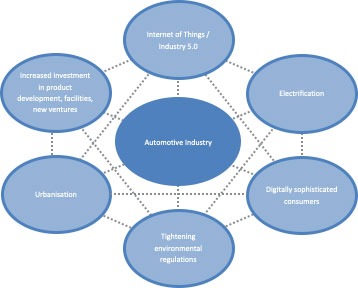
Urbanisation, global warming, and technology are giving rise to disruptive changes in the automotive sector. All these trends will have direct effects on manufacturing and influence the auto manufacturer’s thinking about how to best position themselves for the future.
For example, new platforms for battery and smaller-use city vehicles are being designed and developed in response to continued urbanisation, while CO2 guidelines to combat climate change have significant influence on new model ranges. The aggressive targets require OEMs to increase their share of low emission vehicles and pose the threat of large fines in case average fleet CO2 emissions do not decrease quickly enough.
Some new entrants into the Battery Electric Vehicle (BEV) market are focussing on the production of high-end vehicles. Although those tend to be more profitable compared to compact cars, companies such as Faraday, Lucid and to some extent Tesla, show us just how difficult even this can be. We have also seen some new entrants, such as Dyson, put on hold their electric vehicles programme after realising that near-term profitability in the market was unlikely. Government legislation and incentives in response to climate change have direct effects on the behaviour of manufacturers.
Urbanisation and climate change ultimately mean that OEMs will target more modular, personal, and rentable forms of transport in addition to traditional commercial vehicles, such as buses, in a drive to significantly lower emissions and electrify our transport system.
We also need to be mindful of the role of technology; car manufacturers used to undertake major model changes every five years and minor ones in two-year intervals. Technology is changing this extensively - while minor changes used to consist of very light amendments to the interior and potential facelifts around the bonnet and bumper areas, with technology moving at such a rapid pace, most of the upgrades in the two-year cycle now focus on technology and connectivity with the embedded systems. However, when new car models are being released, the employed technology is often already approaching its obsolescence. This accelerating trend will result in a future of yearly new model development and continuous software updates, similar to what Tesla is already providing.
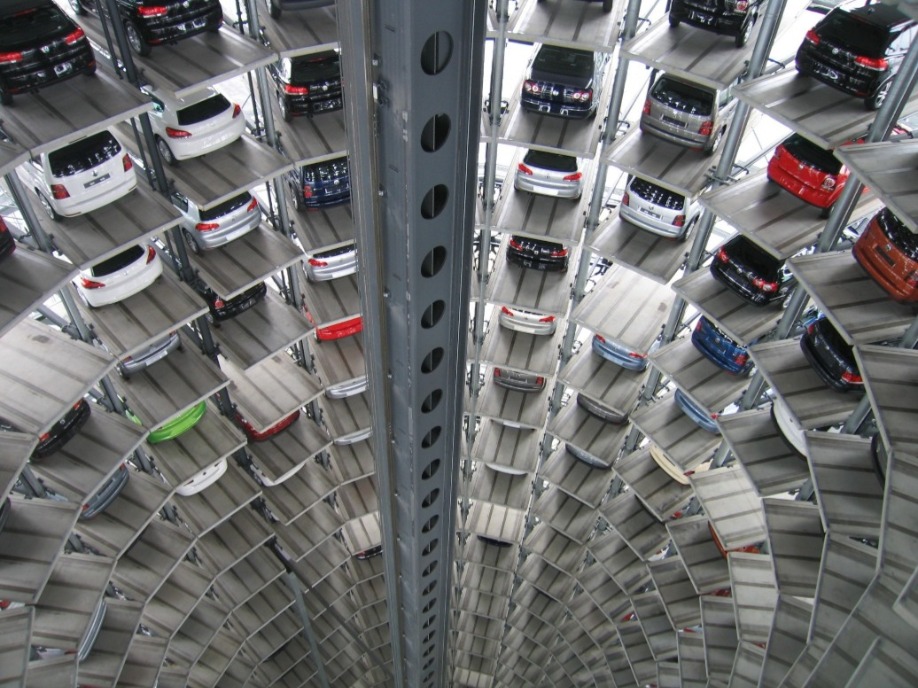
While these mega trends are changing how OEMs are approaching development and vehicles ranges, political uncertainty greatly affects the manufacturing processes with regards to logistics and supply chain stability. Nowadays most cars are simply assembled in-house, with all other processes outsourced to suppliers. This means that just-in-time delivery systems and the certainty of supply chains are the key requirements to build new production plants, with negotiations around supply chains happening two years prior to the start-up of any manufacturing facility. In times of political uncertainty, there needs to be a new framework to assess and guarantee the security around particular parts of the supply chain and the clear development of alternatives via vertical integration to bring critical production in-house.
GLOBAL MARKET FORCES AND THE AUTO INDUSTRY
While OEMs are in a situation where environmental regulation forces them down a route of increased electric vehicle production, these are significantly less profitable than conventional internal combustion engine models, especially within the compact car segment. This is likely to continue for the foreseeable future, even though the costs for electrical components, and especially batteries, are continuing to decrease markedly. Consequently, and to ensure long-term viability, OEMs are focused on a reduction in the overall infrastructure cost associated with new vehicle platforms to ensure the return on investment works for them. This necessitates an evaluation of different business models resulting in a state of flux, probably more so than ever before in the automotive industry’s history.
THE NEED FOR RESILIENCE AND FUTURE PROOFING
The automotive sector is in the middle of its biggest transformation. Rapid urbanisation, changes in mobility and continuously advancing technology are driving numerous challenges and opportunities within the industry, and the need to navigate what lies ahead is critical to success.
Advancement of Big Data, Internet of Things and Industry 4.0 in manufacturing will see factories and facilities take on different roles to adapt to changing business needs. This has led to a reassessment of global footprint, with a possibility of manufacturers setting up partnerships and more collaboration to enable them to be more agile and respond to changing consumer demand.
Clients are increasingly looking for flexibility, expertise and innovation and, as a trusted adviser to many of the world’s top multinational conglomerates, Arcadis’ deep sector knowledge, combined with our technical and business solutions, help us to deliver exceptional and sustainable outcomes throughout the life-cycle of any project.
The ability to adapt to and lead on these changes will differentiate the successful manufacturer of tomorrow.

Natalie Sauber
Market Intelligence and Future Mobility
Arcadis

There is much excitement in the industry about the opportunities that 5G mobile connectivity will bring – including in the areas of media and entertainment, transport-as-a-service (TaaS), smart cities and connected and autonomous vehicles. Speaking more generally about mobile connectivity, mobile network operator Ericsson says that 2019 gave the world a taste of what is to come. However, it also predicts that 2020 will be the year when it all becomes more real than it has been to date. It therefore believes that by the end of the year there will be around 100 million 5G subscribers, and by 2025 Ericsson forecasts that there will be 2.6 billion 5G subscribers.
Dipping 5G toes
Pangea System, architect Dr Arslan Usman, recently told Mobile News: “Now that all four UK Mobile Network Operators (MNOs) have dipped their toes in the 5G waters, they’ll be competing to claim the most widespread coverage. This is great news for end users and providers alike: 5G connectivity sooner and in more locations is a definite win, and a big step towards the Digital Britain we’re all looking forward to.”
“In terms of devices, the big focus has been on 5G-ready mobile phones; but in 2020, manufacturers will join the fray with routers using the technology that can compete with fixed-line Ethernet speeds of up to 1Gbps…Keep an eye on the automotive industry, too: cellular V2X (vehicle-to-everything) tech is going to make leaps and bounds with the near- zero latency of 5G. Smart cars will make some serious breakthroughs with assisted driving and accident reduction, and we’ll be one big step closer to fully self-driving vehicles.”
Near-zero latency
The idea of near-zero latency sounds amazing, but to what extent can it be achieved considering it’s impossible to completely eradicate latency and packet loss? Currently, there is no such thing as zero latency and packet loss. Even mobile networks suffer from it, and increased bandwidth doesn’t eradicate it too – just like traditional wide area networks (WANs) are equally challenged by them. More to the point, at some juncture, a mobile network may require data to go over a traditional WAN.
On the Edge
Edge computing is often touted as the answer too. While it will certainly play a role in mobility infrastructure, connect and autonomous vehicle development through data analysis and data sharing, it can only reduce latency by analysing data and acting upon it close to its source.
Writing ‘Empower your Edge’ for Data Economy magazine, Phillip Marangella, CMO at EdgeConnex adds: “Although latency issues are a major driver of Edge network deployment, it’s not just to provide a smoother graphical rendering to gamers or for a more seamless binging of Game of Thrones. No, the impact can be seen, quite literally, everywhere…There is an infinite number of applications that require the lowest possible latency in order for their users’ expectations to be realised.”
In 2018, David Trossell, CEO and CTO of WAN acceleration company Bridgeworks, talked to TU Automotive magazine about ‘How Cloud Can Give Data Transfer the Edge’, and he said: “The one thing that companies overlook when considering the Cloud is the latency between the data point and the Cloud. This can have a dramatic effect on the performance of the connection. For those time- critical operations, it is better to use Edge connectivity.”
He nevertheless added: “There is never a single solution that meets all of the data requirements of autonomous and connected vehicles. So, for example, using a hybrid solution of Edge and Cloud exploits the best of both technologies. Edge can deliver the instant response, gather, clean and collate the rest of the data when it’s ready for transmission back to the Cloud for further processing.” Therefore, Edge is not a panacea. At some point the data will need to be transferred elsewhere.
Big data analysis
Once the sensor data is collated, mobility infrastructure, connected and autonomous vehicles will create voluminous amounts of data for big data analysis; and so the spectres of latency and packet loss are unlikely to be removed completely from the equation. Certain applications will also need WAN acceleration to enable, for example, database synchronisation as well as high application response times. Moreover, at some point in the entire process, traditional WANs will play a role. The advent of 5G or even Edge computing won’t necessarily mean that WANs have be superseded.
Yet, there is a need with vehicle Edge to find a balance between real-time decisions and advanced data processing on the Cloud. In the TU Automotive article, it responds to a question about how to achieve this end: “This will be up to the communication infrastructure that the autonomous or connected vehicle finds itself in. In a smart city with Edge computing, much data processing can be
offloaded to the Edge, whilst away from urban areas it is going to run autonomously.”
He believes that with connected and autonomous vehicle growth, the amount of data at the Edge will increase exponentially, and so the major problem will be about how to transport all of this voluminous data back to the Cloud. It’s not just from a performance point of view, as there is also a need to consider data growth and data sharing. This is because there is a desire for more open data platforms between the players within the mobility, connected and autonomous vehicle ecosystem, from a security perspective. Personal data is likely to be involved, and so measure will need to be taken to gain the authority to use it, and measures will need to be take to equally secure in – particularly whenever it is shared.
SD-WAN confidence
To many people, the answer to cope with data growth is perhaps to use software-defined WANs, and yet Computer Weekly’s Joe O’Halloran writes that ‘Digital transformation shaking confidence in SD-WAN’. He cites research by Cato Networks, which discovers that while SD-WANs are set for strong growth in 2020 “as buyers migrate from multiprotocol label switching (MPLS) to a more agile and affordable alternative, failing to consider digital transformation can undermine firms’ long-term SD-WAN satisfaction.” They are also seen as being capable of reducing latency and packet loss.
Furthermore, in Data Center Dynamics, Trossell wrote in 2018 about ‘The top five strategies for WAN data acceleration’, and commented that SD-WANs are a great technological leap forward for low to mid-sized bandwidth applications. He says they have the ability to “to pull disparate WAN connections together under a single software-managed WAN.” Yet, despite the often-touted belief that they create a solution, he claims they don’t resolve latency and packet loss issues.
He adds: “…any performance gains are again normally due to inbuilt deduplication techniques. By adding a WAN data acceleration layer, these issues can be mitigated to improve performance, allowing large volumes of data around to be moved more quickly and efficiently than SD-WANs can achieve on their own.”
To reduce these WAN limitations, WAN acceleration with a solution such as PORTrockIT is required. It won’t fix latency and packet loss, but it will address them by using TCP/IP parallelisation techniques and artificial intelligence to control the flow of data across the WAN. Once mitigated, organisations can achieve of 95% WAN utilisation, and even SD-WANs can improve their performance by having a WAN acceleration overlay. It could also reduce the network limitations, whenever data flows over a traditional WAN, that transport-as-a-service in all its guises will inevitably face.
By Graham Jarvis, Freelance Business and Technology Journalist

David Trossell, CEO and CTO of Bridgeworks

By Andy Taylor, Directory of Strategy, Cubic Transportation Systems
To improve transportation in the future, we need to help people get from A to B as easy as possible, be it the quickest, shortest, or most economical route. All while providing the most convenient and user-friendly traveller experience possible.
This goal may seem simplistic on paper, but traditionally has been fought with a number of challenges – most notably the siloed nature of the transport sector. Private and public bodies have operated independently, rather than in unison, which has ultimately halted the progression of a people-centric network.
This has started to shift through the advent of Mobility as a Service (MaaS). MaaS is not a newly coined concept. It has been steadily gathering steam in recent years within the transport community, with successful implementation in cities such as Helsinki and Berlin. Ultimately, MaaS is paving the way for more and more cities across the world to have better, faster, more connected, and personal transportation methods.
Yet, we need to extend conversations of MaaS beyond government chambers and instead seek wider collaboration from government bodies, transit organisations and private companies to tackle the issue of a fragmented transport system and help carve the path towards a MaaS future. These discussions are only set to grow and raise in importance owing to a number of urban, societal and technological factors.
Tackling urbanisation through MaaS transit
One of the biggest drivers for the development of a MaaS future is built on the rapid urbanisation that is occurring globally. More people are now living in cities and their surrounding areas today than ever before. By 2050, the urban community is expected to grow by 2.5 billion, which means that city dwellers will account for 66 per cent of the world’s population.
Ultimately, more people mean more transit journeys. Increased commuters will put further pressure on transport networks which are already operating at maximum capacity, especially in peak hours.
Rising city populations will also increase the amount of congestion facing our roads as we as a society continue to rely on private car usage. According to Inrix’s 2018 Global Traffic Scorecard, UK drivers lost an average of 227 hours a year due to traffic in 2018. This emphasises the delays that we now face owing to rising urbanisation. The success of MaaS in Nordics which enables users of the third-party app, such as Whim, to access public transportation services all through a single service is helping commuters navigate around cities more easily, and make the most of public transport.
Shifting from a ‘me’ to ‘we’ society
Cultural and societal changes are also driving MaaS. In recent years, we have shifted from a ‘me’ to a ‘we’ culture. Today the change in consumer mindset driven by the on-demand economy is apparent. The transportation industry must recognise it is facing a new generation of users: affluent, tech-savvy, and environmentally conscious that have grown accustomed to the immediacy and accessibility of services.
We’re seeing this shift largely due to Millennials and Generation Z which are encouraging the growth of personalised, flexible and sometimes informal mobility services, such as shared car hire. According to The Economist, car sharing will reduce car ownership at an estimated rate of one shared vehicle replacing 15 owned vehicles. The likes of Uber and public bike hire services are also increasing in popularity and are now considered a part of the travel that commuters typically take.
As such, the aims of MaaS fall neatly in line with current and future commuting trends by combining multiple services into a singular payment service, accessible by just a few clicks or swipes of the fingertips.
But MaaS isn’t a solution just for the tech savvy Millennials and Generation Z. MaaS can and should be a solution that drives benefits for all users of the transport network. Better planning and data sharing required for betterment of MaaS solutions will drive benefits in Public Transportation which should serve everyone better.
An additional benefit of MaaS is in its ability to tap into data and understanding commuting trends. Through MaaS, transit operators can continue to provide services that are tailored towards travellers and ensure that they have a full range of transit services available to them in completing journeys in the most efficient manner possible. Data will also help inform cities of the end-to-end journey patterns of the user community so they can then try to understand why someone is making a journey and drive this information into better urban planning for more effective social inclusion.
Capitalising on the technology layer
As exhibited by the success of the MaaS scheme in Helsinki, we have reached a level of technology proficiency that enables MaaS to become a reality on a broader scale. Technology also serves as a catalyst to reduce siloes that exist between different transit organisations and bodies, and help introduce a legislation or framework that encourages collaboration in order to transform commuter’s experiences.
Thanks to significant improvements and adoption of cloud technologies, the transport sector is now in a better position to capitalise on a data sharing ecosystem to create better ticketing and payment services across private and public modes. Cloud-built data warehousing or data lakes can enable easy data sharing between relevant parties in real-time and securely. Data will essentially become the language of MaaS and propel more communication from disparate private and public transit bodies.
Data is plentiful and with the right analytics and technology infrastructure to sift through these insights, we can drive actionable insights that will transform commuting around a city. This wealth of data is only going to increase as we see more and more connected devices and sensors being adopted across cities, with the transport sector being a key vertical that could benefit from this. Analysts predict there will be 34 billion IoT devices in 2020.
The IoT could, for example, help transit operators identity railway tracks that need repairing before a problem even occurs, significantly cutting down on train delays. It could help provide detailed and up to the minute information on bus journeys or any details about congestion on the road that could delay a potential journey. Ultimately, all this information can be relayed more accurately to commuters and MaaS can enable them to find alternative routes to help complete their journeys in the quickest means possible.
It is up to us and future generations to enact actions that enables MaaS to serve as the future of our transport. We already have the tools at our disposal – we now need an honest and open discussion about the underlying role of transportation in our society with all relevant parties, so that we can determine what the future of mobility must look like, understand the trends impacting future transport, who it needs to serve and how, as an industry, we can make our vision a reality. MaaS is definitely a big step towards the future, but it’ll only be successful if we can all come together and understand to realise a joint dream in ensuring seamless travel for all commuters.

David Kerrigan
After Part 1 looked at potential changes to speed the arrival of Robocars and Part 2 looked at the autonomous vehicles we’ll see before driverless cars, Part 3 continues the series by looking at how the incumbents are preparing.
Ford’s investment in Argo.ai, General Motors’ purchase of Cruise and FCA’s deals with both Waymo and Aurora are just some examples of the evolving landscape as traditional car manufacturers invest seriously in the self-driving space through either partnerships with, or acquisitions of, tech companies developing autonomous solutions. After ignoring early efforts such as the DARPA Challenge in 2004 and Google’s subsequent Self Driving Car project, it’s clear that the traditional car manufacturing sector has woken up and is responding to the prospect of a driverless future.
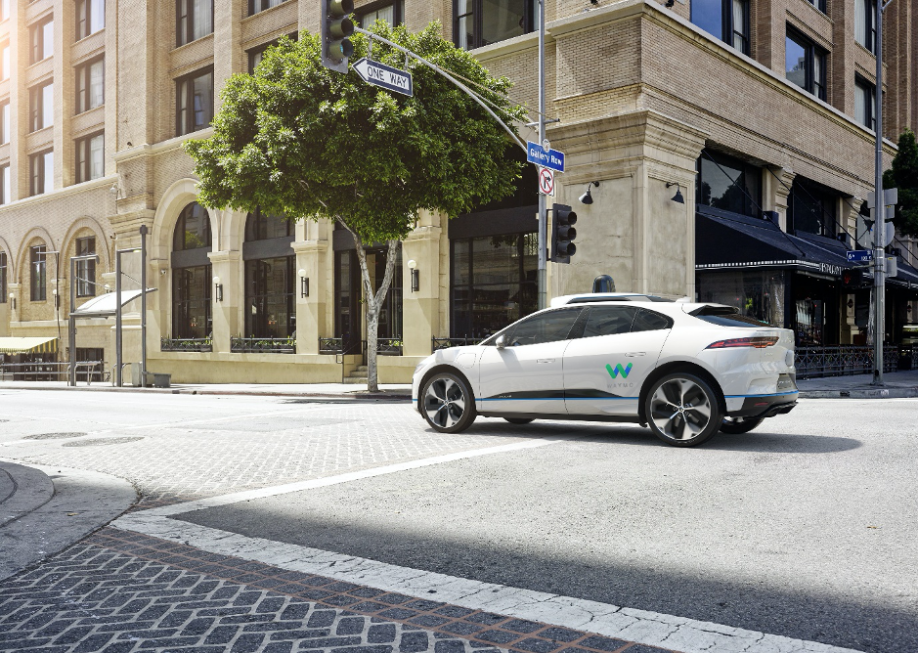
A Jaguar I-Pace with Waymo— Shared, Electric and Autonomous — 3 trends challenging car manufacturers
But when your day to day business relies on selling cars to human drivers, incumbents face a tricky task, balancing investment in their existing steering wheel-equipped ranges, as opposed to the sensor-laden vehicles of the future. The lack of consensus as to when these high-tech chauffeurs will be ready makes this all the more difficult.
Emissions Concern and Ownership Apathy
And as if that isn’t hard enough for financially-challenged car manufacturers who have recently survived their worst financial position in decades, they face another parallel existential threat — electrification.
Transforming a company that has spent decades honing its skills in producing better ICE-powered cars into one able to create viable, attractive electric ones is not fast, easy or cheap. European giant VW Group has earmarked some €80 billion ($90bn) for its development of battery technology and new ranges of electric cars. And although they are happening at the same time, there’s no inextricable relationship between autonomy and electric cars — the two are separate engineering challenges.
“The period from now until 2030 is going to be chaos Not all the companies are going to be able to master the new technologies” - PSA Chief Executive Carlos Tavares, June 2019.
There is another big consideration as well: consumer interest in car ownership is possibly at its lowest point in history. While it’s too early to be sure if it’s a long-term trend, there are indications that younger generations, especially in cities) are not as car focused as their predecessors. Driving license applications are at an all-time low as millennials turn to micro-mobility (Scooters & Bikes) and ride sharing over car ownership. The growth of companies like Uber, Lyft and Lime are not good news for car manufacturers. And it’s a very worrying question for them as to what driverless cars will eventually do to sales.
Costs
Coming on the back of some of the worst turbulence in their history, it is a tough time to ask for speculative investment of billions in autonomy — a technology that many surveys say customers don’t even want; the famous quote from Henry Ford at the time of the last great transportation transition that consumers would have wanted “faster horses”, echoes loudly as consumers questioned now think in similarly linear terms rather than embracing autonomous cars.
Given the complexity of developing Robocars, there’s no guarantee of success. A loss of billions, never mind the opportunity cost of the distraction from your core business, could be the end of even the largest car makers. On the other hand, while I’m not saying it wouldn’t be a disappointment and a painful loss to Alphabet, it has been fined more by the EU than it has invested in the entire self-driving car programme. And while the investment has yielded little in the way of revenue thus far, it has created a valuation for Waymo of well over $100bn. In short, Alphabet could survive the commercial failure of Waymo — but I’m sure that not all the current car manufacturers will survive the onslaught of the shared, electric and autonomous transitions and this is a view shared by industry leaders.
“It’s not just an intellectual capital game but a financial capital game… I don’t think it’s winner take all but it’s a big boys’ game.” - Softbank Vision Fund Partner Michael Ronen
Interim Safety
The great promise of autonomous cars is improved safety. With human error a main factor in the vast majority of deaths and injuries from car crashes, the hope is that handing control to computers will dramatically reduce the human toll. But what can/should we do about safety as we wait for the Robocars? Robocars are not yet capable of recognising and responding to all the unpredictable situations drivers encounter all the time. Ironically, it is not our superior ability to respond to the unknown but our unwillingness to adhere to the rules of the road that is, in part, delaying the advent of driverless cars. If humans could be trusted to drive in compliance with the rules of the road, automating driving would be a significantly simpler task.
While Volvo has traded successfully on a strong consumer message of safety, manufacturers face surprisingly little pressure from customers when it comes to safety features. As a result, manufacturers have traditionally been slow to adopt or develop safety features until pressured by regulators. But consumers are accomplices in this — as a general rule, we don’t like to be told what to do; we don’t like our “freedoms” being taken away, even if it’s intended for our own well-being. Take the example of seat belt interlocks (a technology that prevented a vehicle from being started until the driver had put on their safety belt): introduced in 1974 but dropped based on consumer opposition. Consider also how deeply unpopular with driver’s speed cameras and red-light cameras have proven to be. Also, many jurisdictions suffer from unlicensed drivers but none has had the bravery to suggest a real-time license validation along the lines seen in sci-fi movie, The Fifth Element when a crash causes the ominous computer warning “You have one point left on your license”.
But, even ahead of the expected arrival of robocars, a growing regulatory emphasis on urgently reducing deaths and injuries is gaining strength. In the EU for example, the General Safety Regulation comes into force in 2022 with the stated aim of ensuring that “all Europeans benefit from the latest developments in technology”. How much effort should regulators and manufacturers put into driver assistance technology that can be delivered now versus the speculative benefits of driverless cars?
An Uncertain Era
Although ICE cars are near the top of the Innovation S-Curve, a technology at its peak with little scope for refinement left, the transition to autonomous cars will be a decades-long process. Incumbents juggling multiple challenges concurrently — massive investments in an unsure technology, increased regulatory pressure for safety, popular demand for emissions improvements and electrification — and all at a time when sales volumes are no longer growing — means there’s more than autonomy on their minds as they wait.
The future of Green Urban Mobility is electric, clean, cheap and shared. All-electric car sharing is, and will continue to be, a business that benefits customers, stakeholders, cities and the environment. In the car sharing industry, electric vehicles and TaaS are inherently intertwined as customers, cars and technology become increasingly connected digitally. Electric vehicles and more specifically, electric vehicle car sharing are integral aspects of this future.
By Niels Kaae and Camille Wallace
Sustainability, urbanisation and the sharing economy are three global megatrends, that are expected to continue for years to come. GreenMobility is a forerunner in the electric car sharing industry, leveraging these megatrends to drive a successful, environmentally responsible business. This type of company takes a step in the right direction towards climate change. We look forward to growing this concept sustainably, with exciting innovations, such as Smart Grids and autonomous cars. Currently, there are hundreds of car sharing operators throughout the world. However, only a select few possess purely electric fleets.

Autonomous cars, Smart Grids and robo-taxis
The future of mobility is bright and exciting. In the next decade, we will likely see the widespread introduction of Smart Grids, robo-taxis and autonomous cars. TaaS will be an integral aspect of these developments. GreenMobility will be a key player in the development and implementation of these innovations. Our electric cars and tech experts gather a wealth of data from the cars, which among other benefits, can help ease and speed the development of comfortable, reliable self-driving cars.
Similar to autonomous cars, GreenMobility believes that the data collected from our EVs and the behaviour of our users, will enable the company to expand into robo-taxis quite easily. When the cities are connected on Smart Grids, the possibilities for innovation will increase exponentially . Smart Grids are expected to underpin urban environments in the future. Cities will be integrated according to the grids and Smart Grid Policy in Europe is organized as the Smart Grid Technology Platform. The possibilities and opportunities that will result from the integration of cities in this manner will be life-changing for urbanites in terms of mobility.
Smart Grids will also enable efficient Vehicle-to-grid (V2G) integration. Vehicle-to-grid allows EVs to communicate with the power grid and to sell demand-response services by returning electricity to the grid by throttling their charge route. Some believe that V2Gs will even have potential for balancing the power system in certain areas. By using the properties of the electric vehicle as a power resource, electric vehicles can actively support the grid. This represents a future possibility for profit and support of the city. Smart Grids and V2G represent exciting possibilities for the future.
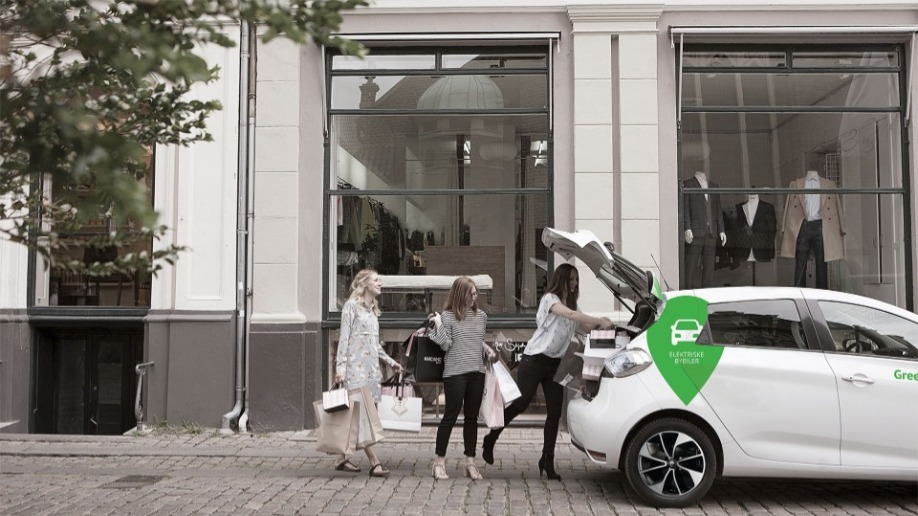
Users & Big Data
Today’s younger users make up a significant portion of our customers and overall, are more readily accepting of shared electric vehicle solutions. The youth of tomorrow will have grown up with both a familiarity with shared mobility solutions and enhanced awareness about climate change and environmental issues. We believe that this will translate into instantaneous acceptance of and desire for access to shared electric vehicle fleet, when these future users become old enough to drive.
Big Data are highly important today and all signs indicate that this will continue to be true in the future. Soon, electric vehicle fleets like ours will gather immense amounts of information about driver behaviour, human driving tendencies, road conditions, etc. This data can then be used to increase the speed at which autonomous vehicles and robo-taxis are developed. Finally, the data can also be used to augment the scope and efficacy of TaaS; in addition to enhance driver safety and warn drivers of a variety of hazards.
In 2020, we are already seeing a tendency towards less private cars per capita. This movement from access to ownership is expected to continue. Especially as cities introduce more restrictions and taxes on privately owned gasoline and diesel-powered cars in urban areas. At the same time, governments and municipalities are aware of the multitude of benefits produced by a shared electric car sharing service. These benefits include reduced traffic, congestion, pollution and noise. Additionally, increased space and cleaner air resulting from a reduction in the number of private cars. In the future, cities will become stronger allies of shared electric fleet service providers. This will then result in fewer private cars and larger shared electric vehicle fleets on the streets of large cities.

Conclusion
The future of mobility is bright and exciting. TaaS is strongly connected to all these exciting developments in the future. In the next decade, we will likely see the widespread introduction of Smart Grids, robo-taxis and autonomous cars. GreenMobility will be a key player in the development and implementation of these innovations. Our electric cars and tech experts will gather a wealth of data from the cars, which among other things, can help ease and speed the development of comfortable, reliable self-driving cars.
Similar to self-driving cars, GreenMobility believes that the data collected from our EVs and the behaviour of our users, will enable the company to expand into robo-taxis quite easily. When cities are connected on Smart Grids, the possibilities for innovation and growth will increase exponentially. Smart grids are expected to underpin urban environments in the future. Cities will be integrated according to the smart grids and Smart Grid Policy in Europe is organized as the smart grid technology platform.
Green Mobility is proving that an electric vehicle car sharing service can be both the best solution for customers, cities and the environment and the best solution for creating value for stakeholders. The future of Green Urban Mobility is luminous and exciting and GreenMobility will continue to leverage its expertise and experience for developing mobility solutions, today and in the future. From creating value for our current stakeholders and customers, to autonomous vehicles and beyond, all-electric car sharing is here to stay with exciting opportunities for all with its bright future.
It’s 2020 and we're at the cusp of the global transition to an all-electric planet.
By Akhil Aryan, Co-Founder & CEO at ION Energy, one of the world’s most advanced battery management and intelligence platform. Accelerating Earth's transition to an all-electric planet, ION leverages advanced electronics and software to improve the life and performance of lithium-ion batteries used in electric vehicles and energy storage systems.
While EVs are relatively simpler to build than ICE vehicles, the components of an EV are far more expensive. Conventional powertrains have as many as 2,000 moving parts while electric powertrains have as few as 20. Not just that, EVs also use more electronic components than their ICE counterparts.
Let’s take a look at the components of an electric car:
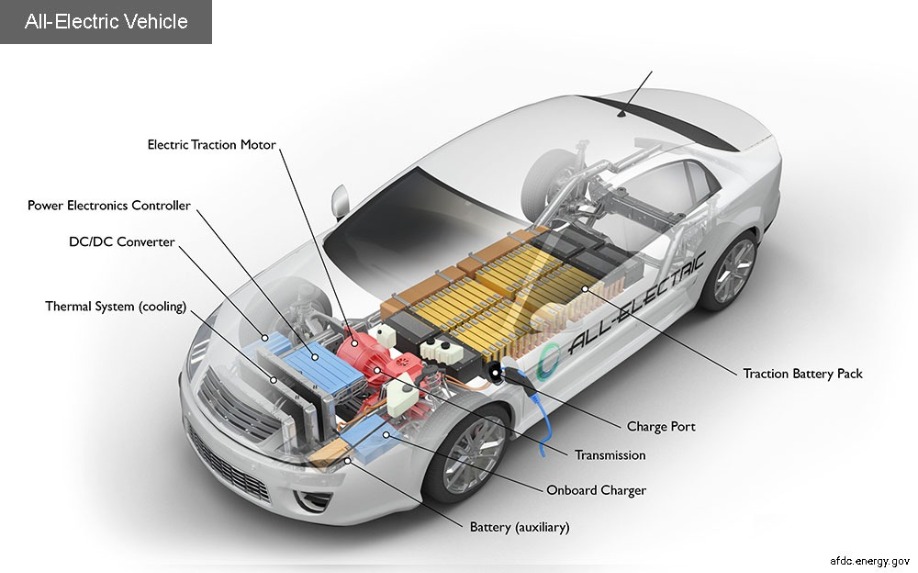
50% of the cost of an EV lies in its electronics (and that cost excludes the battery!). This dramatic shift from mechanical control to electronics is sending waves across the entire Auto Parts sector.
The auto industry is witnessing increased interest in alternative powertrain technology worldwide as more people want to switch to an electrified, zero-emission mode of transportation.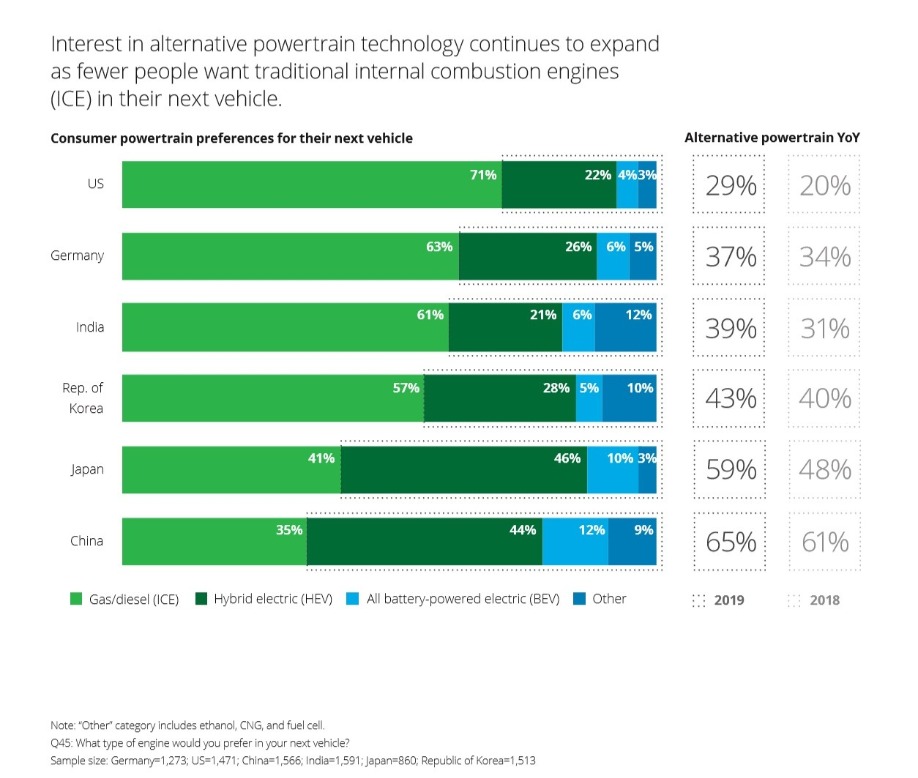
Sample size: Germany=1,273; US=1,471; China=1,566; India=1,591; Japan=860; Republic of Korea=1,513
Source: Deloitte - US - Global Automotive Consumer Study 2019
What does this mean for the automotive ecosystem? Here’s a look:
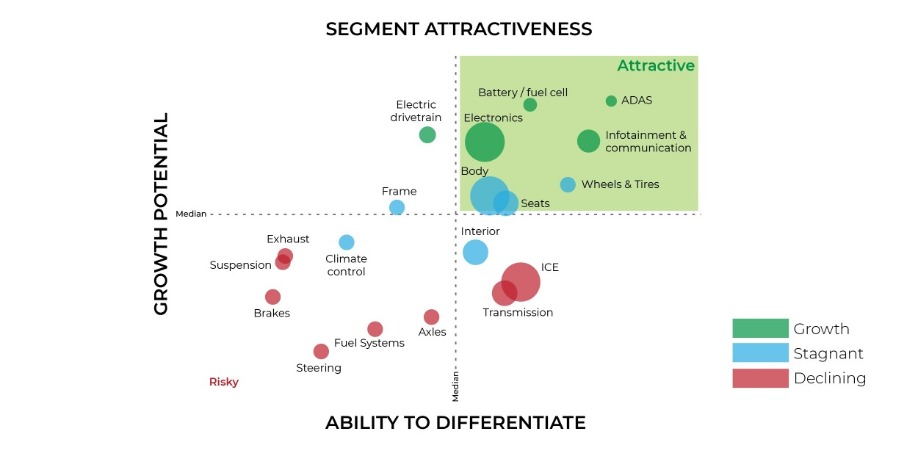
[Image/Stats source: Deloitte - 2019 Global Automotive Supplier Study]
Clearly, the hottest market segment in 2025 is going to be Electronics, thanks to EVs!
Needless to say that electronics, battery, electric drivetrain, ADAS, and IoT are taking over, not just replacing key components of the traditional ICE and leading this transition, but are set to be the differentiators - game-changers of the auto industry. The adoption of electronics in powertrain systems is expected to increase as regional governments and environmental agencies aim to reduce carbon emission by encouraging the adoption of EVs.
There are other key drivers that play a promising role in the growth of EVs. These include - technological innovations, investments in the EV ecosystem, and faster adoption.
Within the electronics segment, let’s take a look at the massively growing connected vehicle ecosystem that’s making cars safer and truly revolutionizing personal transportation. Here’s how this automotive trend is shaping up in 2020:
In 2015, Gartner predicted that Connected Cars will form a major element of the Internet of Things and by 2020, a quarter billion Connected Vehicles will enable new In-Vehicle Services and Automated Driving Capabilities.
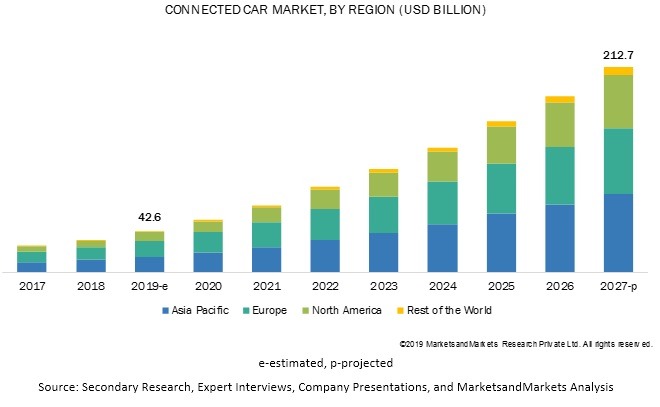
The Global Connected Car Market size is projected to reach USD 212.7 billion by 2027, from an estimated value of USD 42.6 billion in 2019, at a CAGR of 22.3%! Source.
Thanks to developments like 5G, vehicles are going to be ready to better communicate with complex road and traffic situations. These developments will improve connectivity speeds and allow for smarter and faster communication across multiple connected devices.
An increase in efforts by governments for developing an intelligent transportation system, increasing demand for smartphone features in the car, and automated driving technologies along with passenger safety features promise to boost the connected vehicle market.
Let’s look at today’s connected vehicle and the multiple data-generating touchpoints: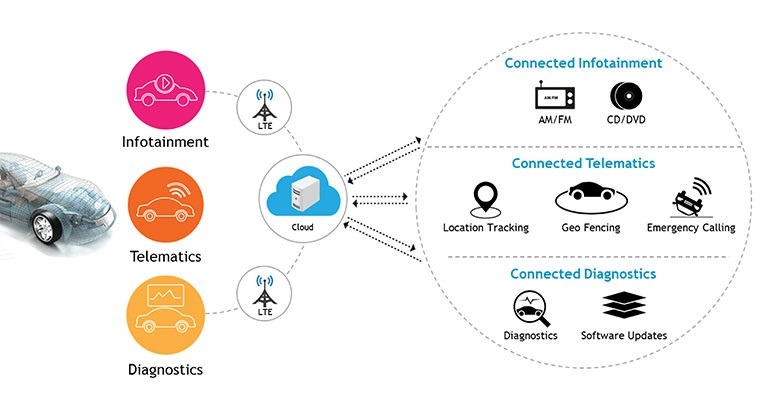
Today's connected technologies are making transportation safer and more convenient.
The Infotainment Systems generate data from personal communication, like voice, text, emails, social networking, contacts, schedules, and infotainment preferences.
The Battery Management System (BMS) is responsible for the safety, reliability and efficient functioning of lithium-ion battery packs. Every Battery requires a BMS! The global battery manufacturing capacity is set to cross 400 gwh by 2022. This massive demand for batteries is driving the need for smarter battery management. The battery management system is integral to the reliable and efficient functioning of the battery. An electronic supervisory system, the BMS manages the battery pack and is responsible for measuring cell voltages, ensuring balanced charge cycles, state identification, and controlling crucial safety systems. It is essentially responsible for safeguarding the batteries from damage.
The BMS uploads this data to the cloud through a Telematics Control Unit, which is the key enabler for all on-board systems connected to the internet.
Diagnostics help make sense of the battery data, access real-time, detailed visualizations and analytics. They also enable over the air (OTA) software updates to fix issues (including security vulnerabilities) that may appear on the field.
How does this data help businesses optimize performance?
The diagnostic and operational data from onboard systems, sensors, and components can be leveraged for safety, security, convenience and to improve operational efficiency and post-sale performance. The ease of vehicle diagnosis provides service cost reduction, ultimately fueling the connected car market.
What makes Electronics the hottest market segment?
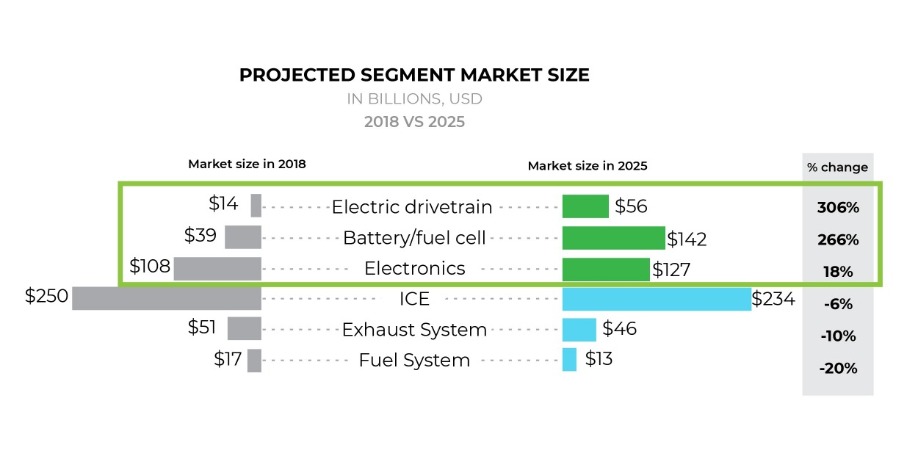
[Image/Stats source: Deloitte - 2019 Global Automotive Supplier Study]
The electronics market segment is growing at 300%!
Green mobility presents a huge opportunity for electronics and electronic component manufacturers as there’s a need for increased integration for electronics for a longer driving range, faster battery charging time, infotainment and safety. These market segments are also clear focus areas for serious automakers who want to adapt fast and maintain their ground.
In response to these electrification trends, the strategic options for auto suppliers are to expand, defend, or pivot. A few serious industry players are revamping their portfolios and realigning businesses. With increased emphasis on EVs, the demand for power electronics has spiked drastically for the past three years. Manufacturers who supply transmission systems, battery management systems, etc are looking at expanding their production in power electronics to compete in the most attractive market segment.
CAV and particularly the AV part of the acronym have been the hottest of transport technology topics for a few years now. The enthusiasm is usually based around two features: a reduction in road crashes, and an increase in mobility for those excluded from traditional car use. Those too young to hold a driver’s license, those whose disabilities or age preclude them from driving even adapted vehicles, and more or less anybody else currently unable to drive themselves will find their mobility transformed from reduced or minimal to complete.
There are other stated benefits of CAVs: a reduction in the total vehicle fleet as we move from owning or leasing specific vehicles to calling up fleet vehicles when we need them, a reduction in congestion due to a growth in shared mobility linked to new ownership models, improvements in air quality as the fleet vehicles are assumed to be electrically powered, and more attractive streetscapes as urban parking becomes a thing of the past.
But the benefits in terms of inclusive mobility are key to the arguments for taking the AV route into future transport provision. The problems caused by transport based exclusion are well known and documented: the practical ones of not being able to access work places, education, essential shopping facilities, medical care etc, but also the general wellbeing ones around loneliness and isolation which frequently cause both mental and physical illness.
In order to realise these benefits we need to make sure that people are at the centre of research, planning, design and funding for CAV. This may sound obvious but is institutionally difficult when we are in the realms of robotics, sensors, communications and automotive technology – fields traditionally focused on science and technology where most practitioners have had very little if any education in the fields of human factors, psychology and anthropology. This expertise needs to be added to teams and channelled into decision making if we are to achieve our aims of delivering inclusive mobility through CAV technologies.
In our favour is that we are actually still at an early stage with this work. The hype has often been deafening and the predictions of a fully automated fleet on UK roads within a very short time frame offered with complete conviction by various players. It needs a step back and a dose of realism to understand that we are actually still early on in the process of automating UK road transport and there is plenty of scope still for making sure that the vehicles, the service model and the infrastructure are truly people focused.
Key to this will be the establishment of appropriate standards, regulations and specifications.
There has already been some very useful work. The UK Flourish project, completed in 2019, included work on elderly travellers as potential CAV users and went into some depth when researching what a CAV should be like in order to appeal to this demographic. The project concluded that while it may be assumed that universal design principles for CAVs should be developed and adopted, the needs of this important user group (and by inference also that of disabled users) were different to an extent that the universal design approach may in fact be wrong.
To quote the project report: “There was a desire for the HMI to remain simple, clear and easy to operate, and for voice interaction to play an important role (either alone or in conjunction with other means such as touch screens for example). The interface should carry forward and adopt the best functionality and accessibility features of current vehicles. Importantly, it should be able to cope with the predictable physiological and cognitive issues of older age. There was also a need for clarity over what the CAV was doing (or going to do), and the capacity to adjust a journey, or to stop it if an occupant of the vehicle requested that. Across all the data collected here there is a desire for a flexible HMI, capable of coping with a range of capabilities likely to be present in a growing older population. This information is helpful and important, and offers a rich source of data for designers of HMI for future vehicles.” The Flourish work is probably the most useful produced in the UK so far in terms of user needs in the elderly and disabled traveller context.
The British Standards Institute and Transport Systems Catapult 2017 report, Connected and Autonomous Vehicles: A UK Standards Strategy did not make any specific mention of standard making with a focus on elderly or disabled users. Nor did the at the time much-quoted KPMG report Connected and Autonomous Vehicles: The UK Economic Opportunity of 2015. The latter omission is perhaps particularly surprising since improving the mobility of disabled and older people will increase their level of economic activity.
However, the CAV Public Acceptability Dialogue Engagement Report prepared for the UK Department for Transport in 2019 provides some insights into general public attitudes to CAVs for disabled people. Possibly to the dismay of some AV advocates, the sample in fact put the mobility of disabled and elderly people and people with mobility needs as the number one reason for implementing CAV technology. Even so, concerns were raised about how practical it would be to travel without a human carer or at least help at start and end of journey with getting in and out of the vehicle. There was a split in opinion between those who praised the increased ability of disabled people to access health care and social events, and those who felt that the very essence of “driverless” would be to increase the loneliness of users who at the moment derive important social interaction from drivers and helpers on public and social transport modes.
Without expressly getting into a discussion about formal standards and specifications, the participants in the dialogue were thinking along those lines: “Participants felt that, though making vehicles accessible (to wheelchair users, for example) would be necessary to improve mobility, it would not be enough, and that CAVs and their software must be designed with a range of needs in mind to enable everyone to fully benefit as users. For example, people with learning disabilities or visual or hearing impairments would also need adaptions to be able to use the vehicles).”
There are a great many standards and specifications underway as part of the CAV revolution. It is essential that the user focus be considered in all of them and when it comes to vehicle design and performance, and the model of implementation, then the people focused approach must take precedence. Here, as in every other form of transport, the user must be at the centre of policy making and technology application. Standards and specifications hold the key to achieving this.
If you would like to take an active part in promoting this topic, please contact ITS (UK) on mailbox@its-uk.org.uk We are collaborating with the Connected Places Catapult and BSI to explore these issues.
Further reading and references:
Connected and autonomous vehicles – a UK standards strategy Transport Systems Catapult and BSI, 2017
Connected and autonomous vehicles – the UK economic opportunity KPMG, 2015
CAV public acceptance dialogue engagement report Traverse (for DfT) 2019
User needs final report Flourish project, 2019
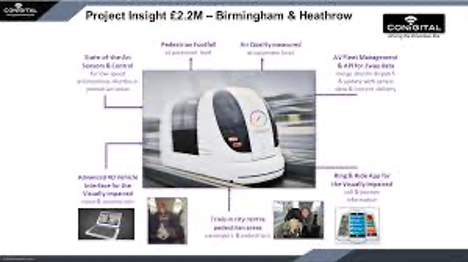
Figure 1 Vehicle design for disabled users - the INSIGHT project (courtesy of Conigital Ltd)
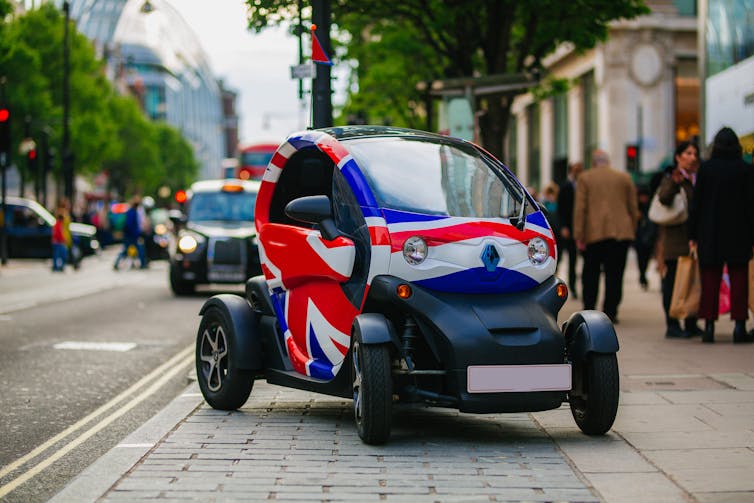
The UK government recently pledged to bring forward a ban on new diesel and petrol car sales from 2040, to 2035. The move surprised some, but perhaps most surprising was the confirmation that the ban will also include hybrid vehicles, which use a combustion engine running on fossil fuel and an electric battery pack.
You might have taken the noise and fumes for granted at roadsides, but the ban would mean that petrol and diesel fuel is eliminated from new passenger vehicles within 15 years. This would have obvious benefits for reducing carbon emissions and improving air quality, but there are significant obstacles for the UK’s car industry to overcome in the meantime.
In 2019, only 1.6% of new passenger vehicles sold were electric vehicles, but they will need to form the majority of sales from 2035. So how can the next decade and a half set Britain on track for zero-carbon car travel?
Read more: Cars will change more in the next decade than they have in the past century
When it comes to designing and building petrol and diesel powered vehicles, the UK has a wealth of talent and expertise. In 2018, the UK produced 2.72 million engines and was the fourth largest car manufacturing country in the EU by total vehicles produced.
If the UK is to retain or grow this £82 billion industry in 2035, much of the existing workforce will need to be retrained in making electric vehicles. A wave of engineering graduates with expertise in electric and autonomous vehicles will also be needed to develop the next generation of electric vehicles.
The good news is that universities and start-ups in the UK are behind world-leading research into new battery technologies. There’s more than one way to power an electric car, and these batteries come in a dizzying variety, from solid-state electrolyte batteries, low cost sodium-ion batteries, and lithium-air batteries which can store much more energy than conventional lithium-ion batteries.
The government is investing £274 million in battery research and manufacturing over four years through the Faraday Challenge. But investment will have to continue well after that to ensure these technologies make the difficult transition from prototype to mass production.
All those electric vehicles will need charging points too, and their increased electricity demand on the national grid will need to be met by renewables. That could amount to over 80 terawatt hours (TWh) – increasing demand by a quarter. New solar farms and wind turbines will need to be built, along with new power lines, substations and rapid charging networks to distribute the electricity. If all of this is to be in place by 2035, action and investment is needed almost immediately.
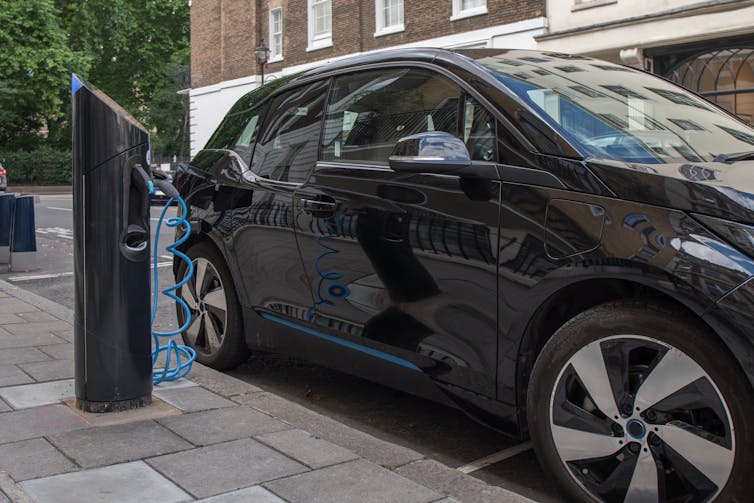
Many electric cars run on lithium-ion batteries, which start to age and lose the amount of electricity they can store from the moment they’re made. This is not so much of a problem in our phones, which have small batteries and are replaced every few years. But when it comes to electric vehicles, the battery pack is typically the most expensive part of the vehicle.
In 2017, the average lifetime of an electric vehicle battery pack was eight years, and only 10-50% of it could be recycled. Targets for 2035 are to have battery packs that last 15 years and are 95% recyclable. Researchers will need to improve the design of these batteries and the cars themselves to achieve this, while the government will have to build facilities that can recycle batteries, separating the raw materials – lithium, cobalt, nickel and carbon – so that they can be reused in the next generation of batteries.
Read more: Lithium is finite – but clean technology relies on such non-renewable resources
Battery electric vehicles aren’t the only solution. Hydrogen fuel cells combine hydrogen and oxygen from the air to produce water, generating electricity. If the hydrogen fuel is produced through electrolysis using renewable energy, then the process can have net zero CO₂ emissions.
Hydrogen fuels cells are less energy efficient than batteries, but the compressed hydrogen tank can be refuelled in less than five minutes and in a similar way to refuelling a petrol or diesel car. This makes hydrogen ideal for vehicles that undertake repeated long-distance journeys and are currently limited by the range and charging times of battery vehicles, such as taxis and transit vans.
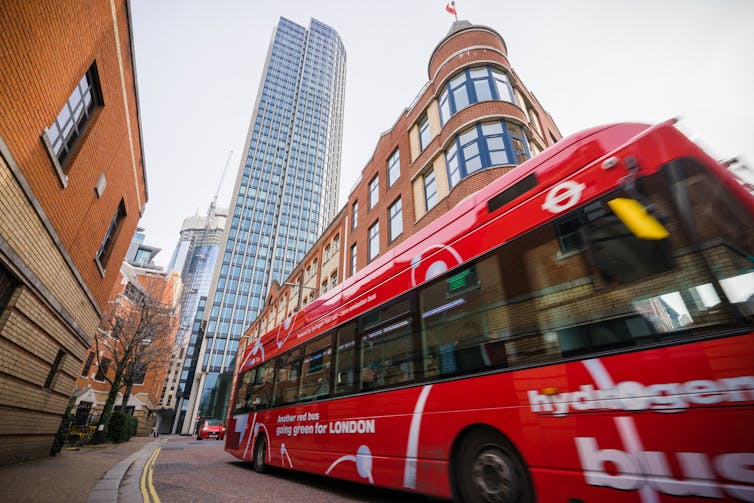
Lorries and buses aren’t covered in the 2035 ban, but hydrogen is also an ideal alternative fuel for them. London has eight hydrogen buses, but there are just 17 hydrogen refuelling stations in the UK, compared with 15,000 electric vehicle charging points. A hydrogen refuelling network is urgently needed to help decarbonise the parts of the UK’s transport network that is hard for electric vehicles to reach.
The common theme across all of these points is investment. If the UK government really intends to meet its ambitious new target, then it will need to invest heavily and soon. If done right, this could reignite the automotive industry and position the UK as a world leader in electric vehicle production.

Ashley Fly, Lecturer in Vehicle Electrification, Loughborough University
This article is republished from The Conversation under a Creative Commons license. Read the original article.
By Tim McGuckin, Executive Director, MaaS America – Cited from Urban Mobility Daily Autonomy- https://urbanmobilitydaily.com/
In the last year, Mobility as a Service has moved beyond the esoteric and, while not mainstream, it is at a point where most of us in the transport community understand its key elements (journey planning, real-time passenger information, and mobile payments – all presented via a smartphone GUI and driven by vast amounts of data) and how it’s meant to work. We know the players of MaaS in a broad sense: public agency owner-operators (of streets, transport infrastructure and public transit services), private sector (mostly venture-backed service providers of various ride-hail, ride-share and micro-mobility services) and, of course, the public. We’ve also become aware – most notably in large cities such as NYC – of the opposing impacts of ride-share on public transit, including reduced ridership, less revenue, sceptical elected official support, and reduced street speeds (due to more ride-hail vehicles increasing congestion). We mustn’t forget either the human costs of this development: the 80% reduction in the price of a NYC taxicab medallion (from an average of $1M to $200k), which is a factor in more than a dozen cab-driver suicides.
Though we cannot predict the future of MaaS and what it bodes for all key actors, what we have observed to date moves us past simple curiosity and passive observational awareness of the ramifications of this new paradigm. We are now at a place where we want to discuss and create solutions about how to make MaaS work, sustainably, for all of us.
By “all of us,” I mean not just public sector transit operators who may see MaaS as a grave threat to their paradigm, that being transport as a public good. I also count private sector actors – the inventors, innovators and yes, investors who come to the mobility space with money and a new paradigm for transportation, one shaped by the profit motive.
Perhaps the biggest difference between MaaS and all prior transport systems and approaches before it is that both the public and private actors must have their needs fulfilled if this new hybrid paradigm is to succeed for us all. And it must succeed, as I see no alternative to MaaS. Why? Well, combining: 1) smartphone penetration rates of 96%; 2) large strides in AI, machine learning and data analytics, and; 3) low latency, high-data-rate 5G networks that enable real-time transaction processing with growing consumer demands for seamless immediacy and “mobile-first” services, there is no going back.
Most of us have noticed that, until recently, at least, advances in private sector-based shared mobility services have shot far ahead of public policy. But as evidenced by Uber’s loss of its operating license (pending appeal) in London in November 2019, there is a push-back. This cancellation of what some call the ‘societal license’ that Transportation Network Companies (TNCs) may have taken for granted shows there is indeed a limit to the “ask forgiveness rather than permission” approach.
What MaaS needs to succeed is a question with potentially many responses. Yet any list we come up with, in addition, MaaS needs trust. This means trusted communication between the main actors, and faith that no parochial view dominates. Further, while parties can talk ‘honest’ all they want, that does not mean they will come to terms. What is needed is a structure that allows actors to participate in a process deemed fair by and for all, one with the goal to create conditions where MaaS can manifest into its ideal form.
Whatever that form is, it will be shaped by the social, geographical and civic attributes of each region MaaS manifests in. Still, there are common elements of that framework, and at MaaS America, starting with MaaS-A-Con, that is the direction we’re heading in. MaaS America has created framework principles it believes MaaS platforms should reflect if they are to produce mobility services that are financially viable, broadly accessible, and dynamic in terms of nurturing the innovation environment required to ensure the availability of services people want to pay for. These principles are:
Inclusivity – The direct role of transportation is to enable the movement of people and goods. But indirectly, if you can’t move, you can’t contribute. The economy and our lives become stagnant. While I personally regard mobility as a right – a central human value – ‘moving’ is simply an economic must. Therefore, MaaS systems should be designed to enable more movement, by more people and goods – not less.
Sustainability – Financial viability is critical to the success of MaaS. The environment is very important, but the need for mobility is more immediate for most people. And other, more effective actors can address the environment more directly. The ideal MaaS enables a variety of mobility service providers. Some of them will offer users ‘green’ mobility services that address environmental externalities, and the net by-product of MaaS will be reduced SOV’s anyway, thereby reducing emissions.
Low Friction – friction is any process that removes energy from a system over time. When a system has friction, you must keep adding energy to it to keep it moving at the same rate. With MaaS, how do you remove friction? You remove friction by making an app easy to download, option-rich, and easy to buy. All this increases service quality and efficiency. Removing even small amounts of friction from the value delivery process generates major improvements in adoption and associated revenues.
Low Barriers to Entry – This specific type of friction makes it harder for a start-up or existing entity to enter, expand, or improve their performance in a market. Examples of a barrier to entry include regulation, IP restrictions, data access and licensing. Requirements to enter a MaaS market should be clear and easy to navigate. They should not favour incumbents, ‘experts’ or dominant players.
Balance – MaaS should acknowledge that the public are stakeholders in their infrastructure. For the most part, they paid for it (!) and as such have a say in how private enterprise extracts value from it. The ideal MaaS minimizes rent-seeking entities, which are entities that do not pay their fair share of ‘rent’ for use of the infrastructure. Likewise, the ideal MaaS, in the context of the public sector, would safeguard against unaccountable subsidies. This is not to imply subsidies are bad … in fact, an ideal MaaS permits the orchestration of subsidies that encourage the movement of the most people.
Over the past decade almost US$200 billion has been invested globally in mobility technology that promises to improve our ability to get around. More than US$33 billion was invested last year alone. Another measure of interest in this area is the number of unicorns, which has doubled in the past two years.
A unicorn is a privately held startup company valued at US$1 billion or more. In early 2018 there were 22 travel and mobility unicorns. By last month the number had grown to 44.
Read more: The battle to be the Amazon (or Netflix) of transport
The top categories in the mobility area are: ride hailing, with 11 unicorns (25.0%); autonomous vehicles, with ten (22.7%); and micromobility, with three (6.8%). The remaining 20 unicorns are in the travel category (hotels, bookings and so on).
Mobility technology is more than just autonomous vehicles, ride hailing and e-scooters and e-bikes. It also includes: electrification (electric vehicles, charging/batteries); fleet management and connectivity (connectivity, data management, cybersecurity, parking, fleet management); auto commerce (car sharing); transportation logistics (freight, last-mile delivery); and urban air mobility.
Much of the interest in mobility technology is coming from individuals outside the transport arena. Startups are attracting investors by claiming their technology will solve many of our transport problems.
Micromobility companies believe their e-scooters and e-bikes will solve the “first-mile last-mile” problem by enabling people to move quickly and easily between their homes or workplaces and a bus or rail station. While this might work in theory, it depends on having safe and segregated bicycle networks and frequent and widely accessible public transport services.
Ride-hailing services might relieve people of the need to own a car. But there is evidence to suggest these services are adding to traffic congestion. That’s because, unlike taxis, more of their time on the road involves travelling without any passengers.
Navigation tools (Google Maps, Apple Maps, Waze) have been around longer than most other mobility technologies and are meant make it easier to find the least-congested route for any given trip. However, research suggests these tools might not be working as intended. The backlash against them is growing in some cities because traffic is being directed onto neighbourhood streets rather than arterial roads.
Autonomous vehicles have the goal of reducing injuries and deaths from car crashes. Only a few years ago many bold predictions were being made that these self-driving vehicles would be having positive impacts by now, but this hasn’t happened. The enthusiasm for autonomous vehicles has cooled. Some now believe we won’t see many of the social benefits for decades.
Read more: How we feel about our cars means the road to a driverless future may not be smooth
The final mobility tech area is known as mobility as a service (MAAS). It’s basically a platform designed to make better use of existing infrastructure and transport modes. MAAS begins with a journey planner that is linked to one-stop payment for a range of mobility services – ride-hailing, e-scooters, e-bikes, taxis, public transport, and so on.
MAAS is the newest entrant in the mobility tech field. It has attracted US$6.8 billion to date, but is expected to grow to over US$100 billion by 2030. This idea is creating great enthusiasm, not only among private entrepreneurs, but also in the public sector. It’s too early to know whether it will improve transportation.
Read more: For Mobility as a Service (MaaS) to solve our transport woes, some things need to change
So, why do venture capitalists continue to show so much interest in mobility technology startups despite poor company performance to date? It appears they believe personal mobility will become increasingly important. Three trends support this belief.
First, urban dwellers increasingly value the ability to move around easily. It’s thought to be a key ingredient for a liveable city. The problem is public transport is often not very good, particularly in the US and in outer suburbs in Australia.
This is due to historically low funding relative to roads. The prospect of more funding and better public transport services in the future is not good. In part that’s because many view public transport as welfare and not an essential public service. Thus, if cities want to become more liveable and competitive, they must look beyond government-funded public transport for other mobility alternatives.
Read more: To bolster our fragile road and rail system we need to add a 'micro-mobility' network
The second trend is declining vehicle ownership. Since 1986 US sales of car and light trucks per capita have dropped by almost 30%. In Australia, new car sales remained relatively constant over the past decade, but a decline since 2017 is expected to continue. These trends are due in part to the cost of owning a vehicle, but also because of a growing view that owning a car may not be necessary.
This brings us to the third trend, which involves demographics and the post-millennial desire for access to mobility services rather than vehicle ownership.
Read more: We subscribe to movies and music, why not transport?
These trends, combined with expectations of an upward trend in prices of these services, suggests there may be good times ahead for ride-hailing and micromobility companies. It also means venture capital funding for these startups will not be diminishing in the near future.
Transport systems are multifaceted. No one single app or technology will solve the challenges. And, as we are discovering, some of the purported solutions to problems might actually be making the situation worse.
If the goal is to get people out of their cars (for better health and quality of life and a better environment), this will require more than a technology. Better infrastructure and public policies (including better integration of land uses and transport to reduce the need for transport) will be required – congestion pricing being one of those.
That is not to say technological innovations are not welcome as part of the solution, but they are just that … “part” of the solution.![]()
Neil G Sipe, Adjunct Researcher in Transport and Planning, The University of Queensland
This article is republished from The Conversation under a Creative Commons license. Read the original article.
It is currently illegal to ride e-scooters in public spaces in the UK, but this has not stopped riders appearing on roads and pavements. An upcoming national consultation means it is a good time to consider the implications of e-scooters coming to UK streets.
E-scooters are an example of new “micromobilities” – short-distance transport options like bike-sharing schemes, sometimes with electric motors – that are changing how people travel in urban areas. In the UK, e-scooters are likely to be used in busy town and city centres, where people take lots of short journeys for work, education and leisure. The locations where rentable e-scooters could be introduced will probably follow Europe: transport hubs like stations, large businesses and shopping areas and university campuses.
The national consultation will include decisions on where e-scooters can be ridden. In terms of both speed and potential safety issues, e-scooters are slower than cars but faster than walking and probably closer to cycling. The pavement may seem the best place for them, but there have been reports of pedestrians being put at risk or injured by scooters.
Cycle lanes may be a more attractive idea. Research in Atlanta found that even temporary segregated lanes make people feel safer on a scooter. Yet the UK is behind many European cities when it comes to dedicated and safe infrastructure. This raises the question of how e-scooter users can safely share space with pedestrians or general traffic.
The UK can learn from cities in Europe and elsewhere on how to balance e-scooter use and available space. Barcelona has introduced regulations to limit scooter use and speed when sharing space with pedestrians, and in Paris e-scooters have been banned from pavements.
The UK can also engage in dialogue with e-scooter operators. Dockless e-scooter company Lime, for example, has been organising roundtable discussions for researchers, local authorities, transport providers and the police. They have put forward their views on how cities can support the development of e-scooters.

Legalising e-scooters would require considering how they will interact with other road and pavement users. If e-scooters are to be made legal in the UK, the government may follow Germany by specifying minimum standards for safety features such as lights, reflectors, bells and brakes. Some cities also require both adults and children to wear helmets when riding e-scooters.
In the UK, Bikeability is an established training course for those who take up cycling. A similar scheme for those using e-scooters may be valuable, alongside online and in-app resources and some operators are providing this. Driver education on how to share the roads with e-scooters and other new forms of transport is also important. The highway code will need to change to provide guidance on how e-scooters and other road users can safely share space.
Parking is also an issue. E-scooters need to be left somewhere between journeys, and their convenience is dependent on a certain flexibility of pick up and drop off. Scooters that are inconsiderately parked or abandoned are unsightly and obstructive. They can also deter people from using public space and can be a serious impediment to people with limited mobility.
E-scooter companies have tried different approaches to addressing thefts and inappropriate parking, including asking people to lock them and sounding alarms. Geofencing – where operators use GPS technology to limit precisely where a scooter can be ridden or parked – can be used to stop users leaving scooters where they cause an obstruction.
Read more: Can e-scooters solve the 'last mile' problem? They'll need to avoid the fate of dockless bikes
It is also important to consider the implications of e-scooters for public health in the UK. Industry claims that e-scooters provide low intensity workouts may be plausible. However, the UK sustainable transport charity, Sustrans, has raised concerns that e-scooters may replace walking trips and therefore have a negative impact on activity levels. Equally, heavy on-pavement scooter use means people are less keen to walk.
E-scooters can be considered an answer to the problem of the “last mile”: that final part of a public transport journey from station to destination that feels too far to walk. This means they can help people take other forms of public transport, by providing a link between a station or bus stop and a place of work, for instance. Even with their short range, then, they could help reduce longer car journeys. A further potential benefit is that, where companies are willing, use data can be shared with local authorities to help make improvements to infrastructure and transport systems.![]()
Graeme Sherriff, Research Fellow in Urban Studies, University of Salford; Luke Blazejewski, Research Assistant, University of Salford, and Nick Davies, Research Fellow, University of Salford
This article is republished from The Conversation under a Creative Commons license. Read the original article.
TaaS Magazine and website offers advertisers fantastic opportunities to reach those involved in the Connected & Autonomous Vehicles and Future Mobility Industry. With packages to suit every budget, take a look at our media kit and get in touch to get involved with the TaaS portfolio of products.
Contact us on the details below to talk about your editorial, advertorial or advertising needs.
T: +44 24 7671 8970
Published by: Angel Business Communications Ltd, 6 Bow Court, Fletchworth Gate, Burnsall Rd, Coventry CV5 6SP. T: +44(0)2476 718970. ISSN 2516-5895
All information herein is believed to be correct at time of going to press. The publisher does not accept responsibility for any errors and omissions. The views expressed in TaaS magazine are not necessarily those of the publisher. Every effort has been made to obtain copyright permission for the material contained in this publication. Angel Business Communications Ltd will be happy to acknowledge any copyright oversights in a subsequent issue of the publication. Angel Business Communications Ltd © Copyright 2018. All rights reserved. Contents may not be reproduced in whole or part without the written consent of the publishers.

